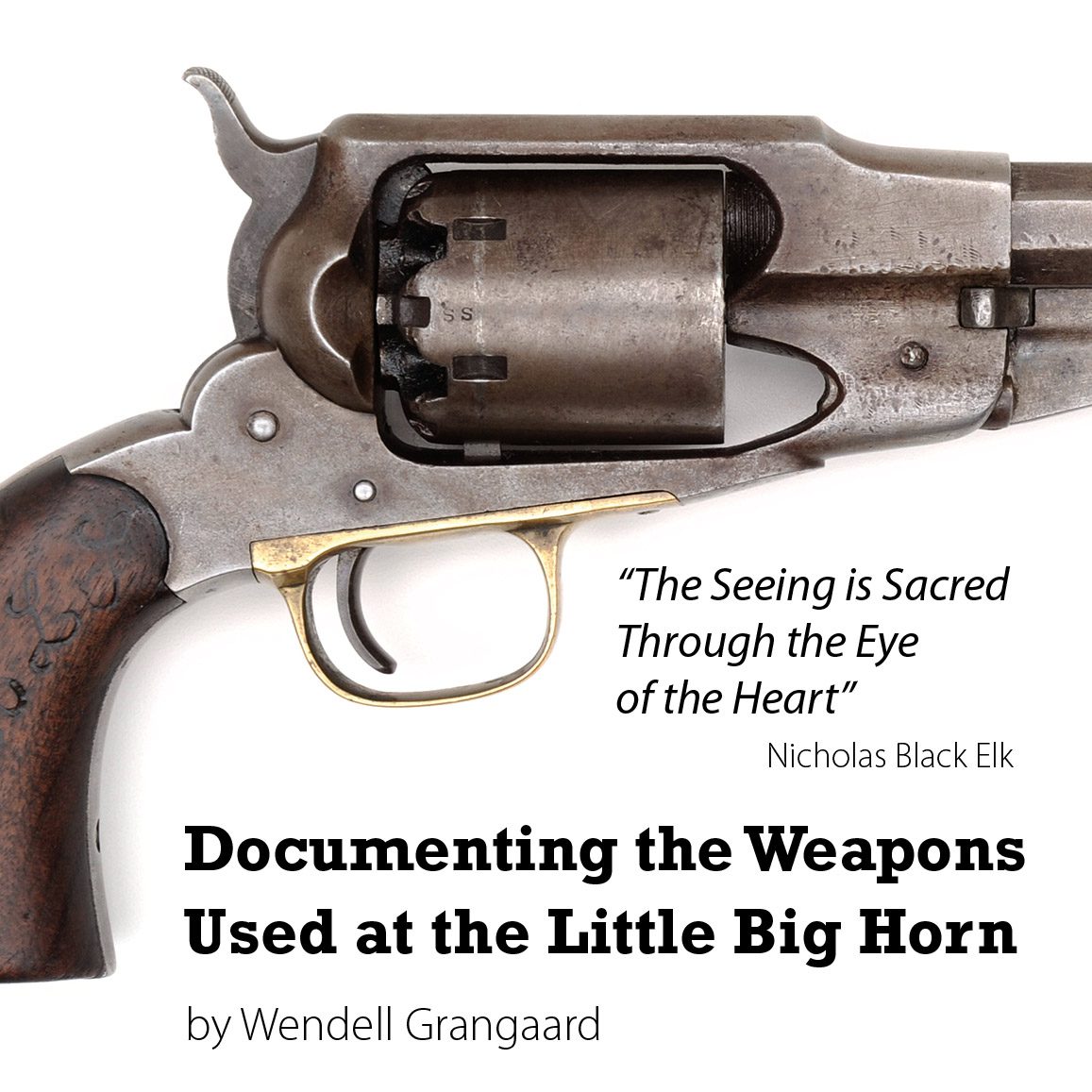” The Seeing Is Sacred Through The Eyes Of The Heart. If One Concentrates On These Meaning, You Will Gain Great Benefits.”
Nicholas Black Elk
Documenting the Weapons of the Little Big Horn presents the history of the weapons used at the Battle of the Little Big Horn or Greasy Grass. This narrative is provided by the member of seven Native American tribes who participated in the battle. The narrative is enhanced by Wendell Grangaard’s personal experiences with the descendants of the participants. Readers will enjoy this description of his journey to locate and document the weapons from this historic battle, and trace the details of their history.
INTRODUCTION
BY MICHAEL HER MANY HORSES
When historian and Mariah Press publisher, David Kemp presented me with the draft of Wendell Grangaard’s text I was quite apprehensive. I am continually reviewing and consulting on history projects relating to my Oglala Lakota people. This is a manuscript by a former East River South Dakota construction person dealing with documentation of weapons used by Lakota and Cheyenne people at the Little Big Horn. Wendell worked extensively on construction projects throughout Indian Country. He had developed a strong friendship with Lakota historian, Benjamin Black Elk. His unique relationship has developed into a lifetime of documenting the weapons of this important time period.
My initial experience of working with Wendell and have him explain his collection was quite remarkable. The research into documenting the origin of each weapon is unique. This research provides the opportunity for the reader and historian of this period of history with a special opportunity to understand the efforts our people to resist and preserve our way of life. Who would think that the history of one weapon could give us such a unique perspective!
Wendell documents the concentrated efforts of our people to develop a knowledge and ability to utilizing the ‘improved’ weaponry being introduced in the Plains Wars after the Civil War. Our people realized that they needed to adapt the methods of protecting our people against the onslaught of the U. S. military. After the Battle of the Hundred In The Hand we needed to develop special methods and special groups to provide us with proper defenses.
Wendell’s text emphasizes that the experience of the Battle of the Greasy Grass remains a unique and special event in our individual family histories.
The detailed digital photographs enhance the recognition and understanding the meaning of the weapons as an important historical artifact. The importance of the preservation of these artifacts is emphasized.
Wendell’s presentation of the most extensive narratives created about the Battle only enhances the reader’s experience. The translation created emphasizes the difficulty an historian encounters when creating an accurate Battle narrative.
We hope that you will enjoy and appreciate this lifelong effort that Wendell Grangaard has carried out. We hope that this text and additional works in progress will only enhance our people and those interested historians’ understanding of this most important period of time in our people’s history.
Michael Her Many Horses
Wounded Knee

